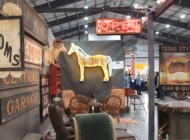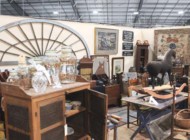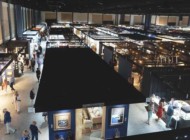Review by W.A. Demers, Photos by Greg Smith & W.A. Demers
MANCHESTER, N.H. — Faces were masked, but the commerce was face-to-face as dealers and collectors met to examine, discuss and buy all things antiques at the 64th annual New Hampshire Antiques Show. The in-person event returned to the DoubleTree by Hilton August 12-14, its organizers, the New Hampshire Antiques Dealers Association (NHADA) determined that the show would go on this year with social distancing and masks required. A sign on the desk at the entrance to the show in fact said it all: “Masks required for the health and well-being of customers, staff and exhibitors.” Stationed at the desk, NHADA’s Michael Sczerzen acknowledged that it would be difficult to enforce once showgoers got onto the floor.
The excitement of being at a live show was palpable, and though it was difficult to visualize the gate on opening day due to the fact that showgoers were in a long, snaky line that stretched down the hotel’s Pleasant Street entrance and followed the shady left onto West Central Street, it was soon evident when large, acquisitive throngs filled the show aisles and booths. Said Tommy Thompson, NHADA’s president, “I think it went extremely well. The gate was down a little bit (from 2019), but we expected that. There were faces that we usually see that we didn’t see, but we also saw a lot of new ones. Especially, there were a lot of younger people there.”
And it was as if no one had missed a beat during what seemed like a long hiatus. Load-in, beginning at 7 am on Wednesday, went smoothly, with one of the show’s porters, Curran Shane, remarking that in his 15 years of helping, “it’s the quickest I’ve ever seen folks getting in.” Normally, dealers prepare all year, saving their best inventory for this show. This time, they’d had a year and a half to collect new merchandise. Sure, there was an online edition in 2020, which had been successful for many, but both dealers and collectors know that being able to see and handle the antiques, as well as ask questions in real time is always preferable — and the booths the exhibitors assembled were consistently beautiful to behold.
Among the 60 dealers assembled for the show, new exhibitors were added this year with Cottage & Camp, Hudson, N.Y., presenting a wide-ranging selection of furnishings with history, form and patina along with folky paintings, objects and art; and Jeff Bridgman, now in his 30th year of business of dealing and collecting Nineteenth Century paint-decorated American folk art, furniture and especially antique American flags and political banners. Also new to the show were Jeffrey Tillou, Early American Antiques, Sheridan Loyd, McClard Segotta Antiques, Thomas Rawson and David and Jane Thompson.
Some dealers were still tweaking or editing their booths at 6 pm the night before the show opened, but among those ready long before that were Jef and Terri Steingrebe, Springfield, N.H. They had brought, among many other items, a Nineteenth Century Hackney Horse weathervane from the Gilbert Livingstone Farm in Vermont, a large colorful whirligig, a set of six pool room viewing stools found in a poolroom in Windsor, Vt., and a remarkable large carved and handled burl bowl.
Undoubtedly, long after the show closed, people would be talking about the exceptional six-drawer canter displayed front and center in the booth belonging to the Newcastle, Maine, dealers Tom Jewett and Butch Berdan. Attributed to Joseph Rumvald Bernier (1873-1952), a lumberjack from Canada who settled in Saco, Maine, the piece was a tour-de-force of furniture, profusely decorated with applied floral folk carvings. In pine, the 53-by-30-by-30-inch piece was further made remarkable by the fact that Bernier is mostly known for his body of carved birds, and this was the only piece of furniture by him the dealers had seen. Also on offer here was a Shaftsbury, Vt., diminutive secretary, circa 1835, all in grain paint with three drawers, two doors and an interior featuring many drawers and cubbies. An eagle rug dated circa 1920 and a patriotic hooked rug from New England were also notable. Said Tom Jewett after the show, “The show ended up very good for us and I think most dealers did well across the board. While the crowd was down a bit due to the pandemic, those who came were serious buyers and collectors and they bought.” The dealers counted among their sales a rare wooden carnival head knock down, an Ice Cream sign and other signs, a paint-decorated blanket chest, folk art, weathervanes, holiday items, a rare tea table in old paint and many painted smalls. “We love this show and are already planning for next year,” said Jewett.
West Newbury, Mass., dealer Linda DeCoste said she did not have much information about a farrier’s iron sign that had been found in Newbury but it was elaborately made with a standing horse resting atop an oversize horseshoe that was bisected by hammer and tongs. On the wall was a Nineteenth Century New Hampshire country store piece from Kugelman’s Fancy Goods & Small Ware, Woodville, N.H., and next to the farrier’s trade sign was a Nineteenth Century carved caribou head by Henry Leach (1809-1885) with real antlers. Leech was a recognized carver of nautical figureheads in greater Boston, moving to Woburn, Mass., where he continued his craft.
Sad irons for sale. No, it’s not the title of a country ballad, but a colorful lineup of 18 of the pre-electric pressers on offer in the booth of Joshua and Mary Steenburgh, Pike, N.H. Although it’s tempting to think the term “sad” arose from the grim task of early ironing, it actually derives from the Middle English word for solid — and they were, typically weighing between five and nine pounds. There was another collection here that was close to Josh Steenburgh’s heart — a shelf bearing a number of bee boxes from the late Nineteenth/early Twentieth Century. The boxes, each featuring a door with glass window, were for safely transporting the queen from a bee colony. These folkier items shared the booth with an important piece of American history, a copy of the Declaration of Independence, a true facsimile copy printed in 1818 by Benjamin Owen Tyler.
“I was really pleased that we were able to have the show and that everyone cooperated with our last-minute request for masks,” said Josh after the show. “The NHADA show committee worked overtime to make this event happen and it wasn’t always easy. It’s my 14th year as an exhibitor and I thought the show looked the best it had in years. Our dealers had two years to save up for this event and the quality and quantity showed.
“I had a great show,” Josh continued. “We sold across the board — country furniture, cupboards, a harvest table, bucket bench, a number of gameboards, paintings, signs, the collection of bee boxes and loads of country smalls — in all, about 70 items total.”
Back home in Colchester, Conn., his shop set up once again, a pleased Arthur Liverant of Nathan Liverant and Son said, “It was a good show. It was fun to be with people with like interest and enthusiasm.” With more than a year and half of acquiring new good merchandise, Liverant and his associate Kevin Tulimieri had more than enough to stock their booth. Surprisingly, tables covering 150 years of the category were strong sellers. “We sold four tables,” said Liverant, “all of another period — an early tavern table, 1720-40; a large Queen Anne drop leaf table with original red wash, 1750-80; an incredible drop leaf bird’s-eye top that no one’s ever seen before, 1830-60; and a Federal card table, 1790-1810.” Another gem in Liverant’s booth was a Chippendale cherry tall chest shown with inlaid drawer fronts, rope-turned quarter columns, gadrooned apron and ogee feet. An early sale, the Connecticut River School piece, circa 1785-1800, was possibly from New Hampshire or Vermont. Within minutes of the show opening, Liverant was writing up the sale to a Connecticut couple. “We pulled out one drawer — and that was it,” he said.
Liverant said he was looking forward to hosting a Jubilation Celebration on Sunday, September 18, from noon to 4 pm at the shop at 168 South Main Street in Colchester. The firm will be marking three generations and 100+1 years of “antiques, art and doing what we love,” he said. There will be food, drink and special one-day discounts on the firm’s entire inventory.
Back home in Iowa, show newcomer Tom Rawson of Cedar Rapids, said, “I thought the show looked amazing, as always. This was our first time exhibiting at the show, but we have shopped it for years. I’m told the crowd was somewhat down but you couldn’t tell that from sales. We did phenomenally well as did all the dealers we talked to. We sold a dozen serious pieces of folk art, two expensive stoneware jugs, a wonderful portrait and another painting, baskets, several other pottery items and a super gameboard. The show was extremely well organized, and we owe a great debt of gratitude to Bev, Josh, Tommy, Sharon and all the others responsible.”
Added to the show this year was David Thompson Antiques and Art, South Dennis, Mass. David and Jane curated their booth with some choice finds from old Massachusetts estates, including, from Cape Cod, a Thomas Seymour, Boston, dressing glass, 1810-12, nearly identical to one in the Winterthur collection, and an oil on canvas of the “Queen of Clippers,” a ship built in 1852 by Robert E. Jackson and launched in 1853. It made regular runs between New York and San Francisco during the California gold rush. The circa 1870 painting was signed with the initials RDM in the lower right corner. From an old Massachusetts estate was a Shaker storage chest, 1830-40, probably Watervliet, in pine with original finish.
Show newcomer Early American Antiques, Canfield, Ohio, featured an American stretcher base tavern table, 1680-90, with a scrubbed top in oak and pine with robust turnings and pierced knee blocks. From the first half of the Nineteenth Century was an Ohio tavern sign, double sided, in its original iron framing. And a carved and gilded American eagle on offer here was from the third quarter of the Nineteenth Century and had been found in eastern Pennsylvania.
Corner shelves are generally nondescript because, after all, it’s what one places on the shelf that is intended to catch the eye, right? Not so for Sandy Jacobs. The Swampscott, Mass., dealer showcased a Nineteenth Century graphic red corner shelf that fairly bristled with two tones of red paint, lolly pop ends of elongated and tapered double triangles forming its decorative back, further embellished with stars and flowers on top and in the corners and sides. Also catching attention in Jacobs’ booth was an outsider art Statue of Liberty by Dan Slaughter of McGregor, Iowa, circa 1960s-70s, and a Southern fireboard in canvas with yellow pine stretchers, a composition of a table with a bottle, glass, cork and cigar and floral decoration running down the sides.
Another must-destination at this show is the booth of Tom Longacre and Beverly Weir-Longacre, Marlborough, N.H., dealers who for nearly 50 years (40 of those as NHADA members) have been dealing in country and formal furniture, folk art, paintings and accessories — plus Bev’s unparalleled collection of antique Christmas items. Highlights here included a replica of a two-story colonial home, all hand made, down to the roof shingles, a fruit and flower arrangement attributed to Doris Stauble of Wiscasset, Maine, in a large early turned wooden bowl in old blue paint and a red painted countertop chest, circa 1830-50, with 14 drawers set into a molded decorated base. “We felt that the show looked wonderful with interesting items in every booth,” said Bev Longacre afterwards. “A great effort by all the exhibitors. Sales were strong throughout the show — we sold the folk art house, the red chest, weathervanes and beautiful yellow dressing table, plus lots of Christmas — and it was great to see so many returning customers after last year’s hiatus. We are looking forward to next year as we plan the celebration of the 65th NHADA show.”
Woodbury, Conn., dealers David Schorsch and Eileen Smiles enumerated a number of sales from their booth filled with American decorative arts of the Eighteenth and Nineteenth Centuries, with a special emphasis on folk art. These included a watercolor love token inscribed to Bard Plumer of Milton, N.H., by the Heart and Hand Artist; a double pocket wall box with drawer, attributed to Vermont or New Hampshire, dated 1830; a Canterbury, N.H., Shaker oval box in vibrant yellow paint; a tall Massachusetts or Rhode Island sack-back Windsor armchair with unusually carved knuckles that the couple first handled 40 years ago; and a rare Boston paperboard band box covered in floral chintz in pristine condition. “I thought the show looked great,” said Schorsch back home in Woodbury. “It retained its unique blend of Americana in a wide price range from a true cross section of dealers offering their best material. The excitement and anticipation generated by this show remains unequaled. We were very pleased to be a part of the show for our third time: we participated at the live show in 2019 and the online version in 2020. It was great to see all of our friends in the antiques community again in person despite the slight inconvenience of masks. We had a nice reception to our offerings and display. We made sales to a combination of existing private and institutional buyers, and a new collector in their early 30s.”
Specializing in Americana and folk art, Kalamazoo, Mich., dealer Jeffrey Roelof had a great painted tin sign for a Clothing Department in Nashville, Tenn., circa 1910, along with a pair of barber poles in original paint, two Mason bluebill decoys and a homemade violin case out of Michigan, probably 1850-60. “I sold to customers from California, Texas and Tennessee,” said Roelof. “I had a very successful show. Sales included a Pennsylvania Dutch cupboard, the barber poles, signs and many smalls. Sales continued Friday and Saturday. Great crowd — a mixture of dealers and knowledgeable collectors.”
“The show looked fabulous and the dealers were prepared with many fine items fresh to the market,” said Randy Segotta, who with partner Peggy McClard operates McClard Segotta Antiques, Folk Art & Americana in Weare, N.H. “The energy and excitement — and attendance, too — was only slightly toned-down by the coronavirus and its Delta variant. Shoppers on Thursday, the first day, were actively hunting for treasures, and we got lots of attention to our portraits and silhouettes. Although not sold, a huge 4-by-5-foot signed family portrait of six had many admirers and picture takers. A fabulous red-painted William and Mary chest of drawers was priced right and was snapped up early, as was a rare Rufus Porter portrait of a child from his early work. Peggy’s Great Dane mobility service dog was also a big hit as she staffed the booth and fooled many attendees with her motionless and regal pose. Friday had a notable number of buyers, and Saturday was punctuated by new and seasoned collectors asking good questions about areas that interest them.”
There was a “sisters’ theme going on in the booth of Bev and Doug Norwood, the Spirit of America dealers from Timonium, Md. A pair of New Hampshire sister samplers wrought by Phebe and Abigail Osborn and “Two Lovely Sisters in Blue,” a pair of detailed and finely executed portraits done in an outdoor setting, each sister holding a sprig of flowers. Signed and dated on the younger sister’s portrait was “I.C. Green, 1836.” There was also a needlework from the Shaker community of Enfield, Conn., which was founded in the 1780s and lasted until 1817. It commemorates the life and family of Harvey Parsons, who was likely raised by the Shakers.
.jpg)
Antiquarian books, paper, manuscripts, photography and lots of Shaker was there to be perused at DeWolfe & Wood, Alfred, Maine. “The show looked great and we thought the crowd was strong and they came to buy,” said the dealers. “Our sales exceeded our expectations and we sold items in all areas and in all price ranges.”
Tim Chambers, owner of Missouri Plain Folk, Sikeston, Mo., can always be counted on to bring choice folk art with a Midwestern sensibility. Highlights in his booth included an Eighteenth Century bucket bench from a dealer’s collection, a wheel of fortune that had once belonged to television’s Norman Lear and a trade sign from the outside of a bicycle shop in Wisconsin with wheels that could catch the wind and turn.
At Steven F. Still, Manheim, Penn., there was a large, full-bodied cow weathervane from the last quarter of the Nineteenth Century. With copper body and zinc head, it had come off the roof of the Helfrich Springs Farm in Whitehall, Penn., and came with a photo showing it atop the very barn. Also on offer was a 32-drawer apothecary with original paint decoration, signed G.A. Butler, May 3, 1869, Lempster, N.H. Formerly in the collection of Joanne and Jeffrey Klein, it had remnants of an old paper label from a Newport, N.H., druggist.
Among those still “editing” their booth at 6 pm the night before the show opened were Jeff and Holly Noordsy, Cornwall, Vt., and with good reason, for the result was very attractive. The visual “magnet” was a bright, crimson and yellow late Nineteenth Century gameboard, which the couple said “really pops.” A cast iron architectural element from Utica, N.Y., circa 1875, showed “Perseus” in profile. And of course there was a glass showcase filled with their specialty — early American bottles, blown glass, tableware, earthenware and stoneware.
Those in search of decorative arts and artifacts of the American Colonial period head straight to Hollis Brodrick, a dealer from Portsmouth, N.H. Here they could find an unusual long New England tavern table, circa 1725-45, with turned stretchers and legs, its overhanging pine top a generous 49 inches long. It had been purchased from Roger Bacon around 50 years ago and retained its original drawer and knobs. A rare expression among Colonial pine furniture was an early Eighteenth Century white pine chest over drawer, cut out ball feet, single arch molding and tear drop pulls. It was probably a Massachusetts piece, circa 1730. Even earlier was a pair of William and Mary reflector mirrors along with their original sconce arms, circa 1690.
From Enfield, N.H., Barbara Boardman Johnson of Pewter & Wood brought Eighteenth and Nineteenth Century American country furniture, painted smalls, folk art, textiles and more. There were some fun items here, among them an Aqua-Board from the Peterborough Canoe Co., circa 1940. Johnson provided some history on the Ontario, Canada, company. It was founded in 1897 by William Hill and Elihu Edwards, mostly manufacturing canvas covered canoes. After World War II, the company became less profitable due to competition from aluminum and fiberglass and turned its attention to wooden powerboats, surfboards and water skis. The summer vibe was further met with a series of vintage bathing suits, all from a New Hampshire estate, professionally framed and conserved. From the 1920s-30s, they included a woolen red and white suit, a woolen blue number and a woolen red one. Also on offer was a bittersweet and black paint decorated six-board blanket box on feet from the first half of the Nineteenth Century.
Some of the items displayed in the show were not only historical but poignant as well. Such was the Pollock Family Pyramid, which Adam Irish of Old as Adam, said had been deaccessioned by a small town museum in North Dakota. Obviously, the pyramid, bristling with applied seashells and many ambrotypes from the third quarter of the Nineteenth Century was an object of family pride, depicting among the number of Civil War soldiers and perhaps a Native American. Similar to one held by the Portsmouth, N.H., Historical Society was a temperance sign, also from the third quarter of the Nineteenth Century. Irish explained that the graphic — a champagne flute encircled by a snake with lettering like “redness of eyes,” “wounds,” “babblings,” “contentions,” “sorrow” and “woe” — was used as an aide de memoir by a traveling temperance lecturer. The sign was designed to be disassembled for ease of transport to another town.
.jpg)
From the late Nineteenth/early Twentieth Century, this collection of 18 colorfully painted sad irons in Josh Steenburgh’s booth warranted their own shelf.
St Joseph, Mo., dealer Sheridan Loyd filled his space with Eighteenth and Nineteenth Century furniture, folk art, paintings and accessories. A country Hepplewhite card table featured a scrubbed top and generous overhang above a base that hosted a single dovetailed drawer. Retaining its red paint, the piece had been in the collection of Paul and Cheryl Scott and Suzie and Rich Burman. With a strong attribution to Massachusetts artist Zedekiah Belknap, 1781-1858, a portrait of a gentleman, identity unknown, pictured a man appearing to be in his 30s wearing a dark suit coat over a light colored vest and shirt. The portrait was housed in a period lemon gold frame. Also, formerly in the Burman collection was a Heart and Hand pen wipe dating to around 1880. It was of painted hide, probably kid skin, and fabric.
In the end, the show created a buzz that generated vibrations lasting for days afterwards. The association’s director of communications Sharon Platt summed up the event, saying, “The 64th Annual New Hampshire Antiques Show was a great success with extensive planning and the coming together of our family exhibitors who traveled from all over the country to present a stunning display of their best Americana and folk art. Sales were strong throughout, with many customers shipping objects through our NHADA shipper.
“The highlight of the show was the excitement of our attendees as they returned after a one-year hiatus. We look forward to a sensational celebration of the 65th New Hampshire Antiques Show, August 11-13, 2022.” For information, www.nhada.org.

.jpg)
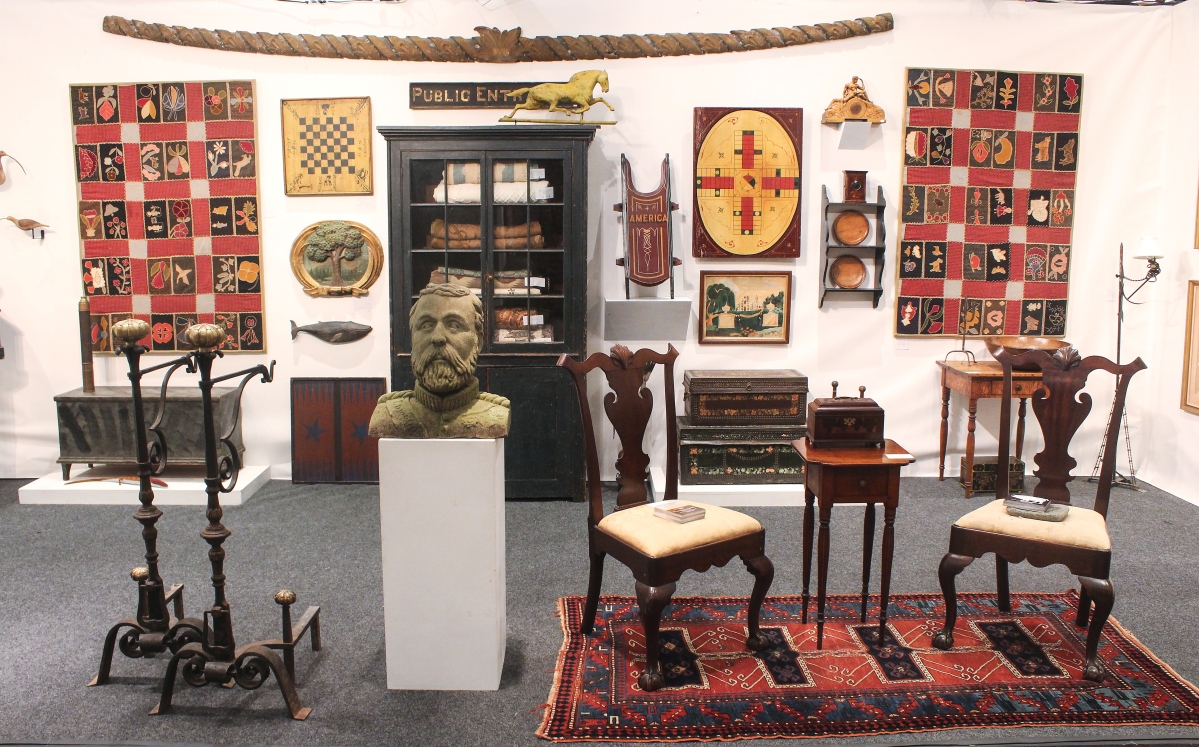
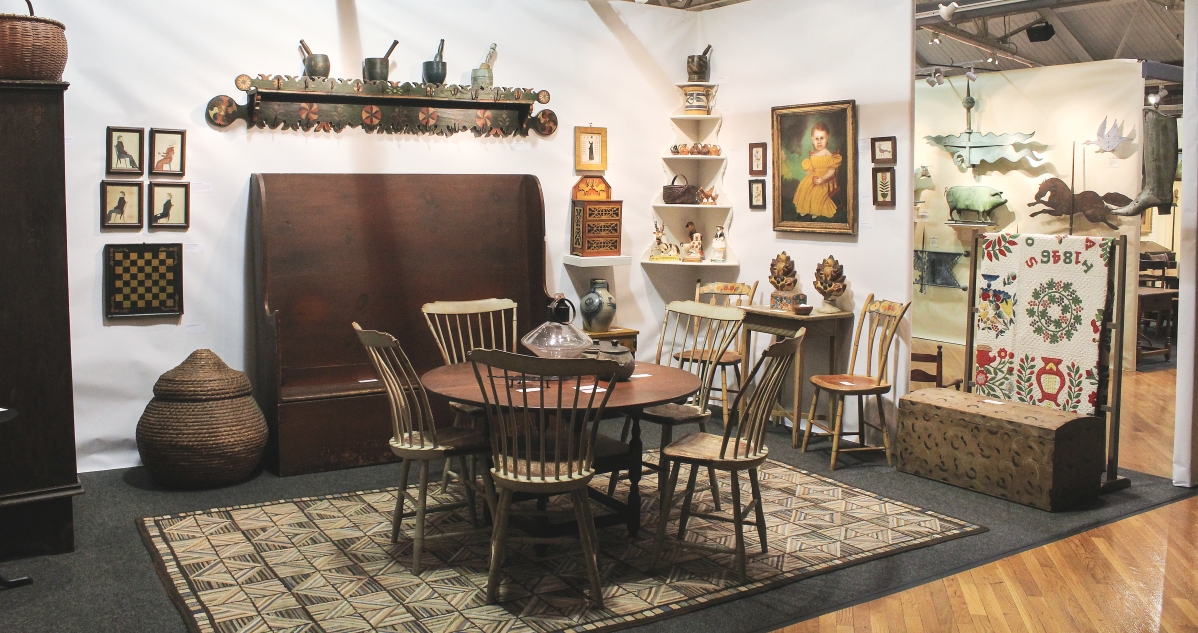
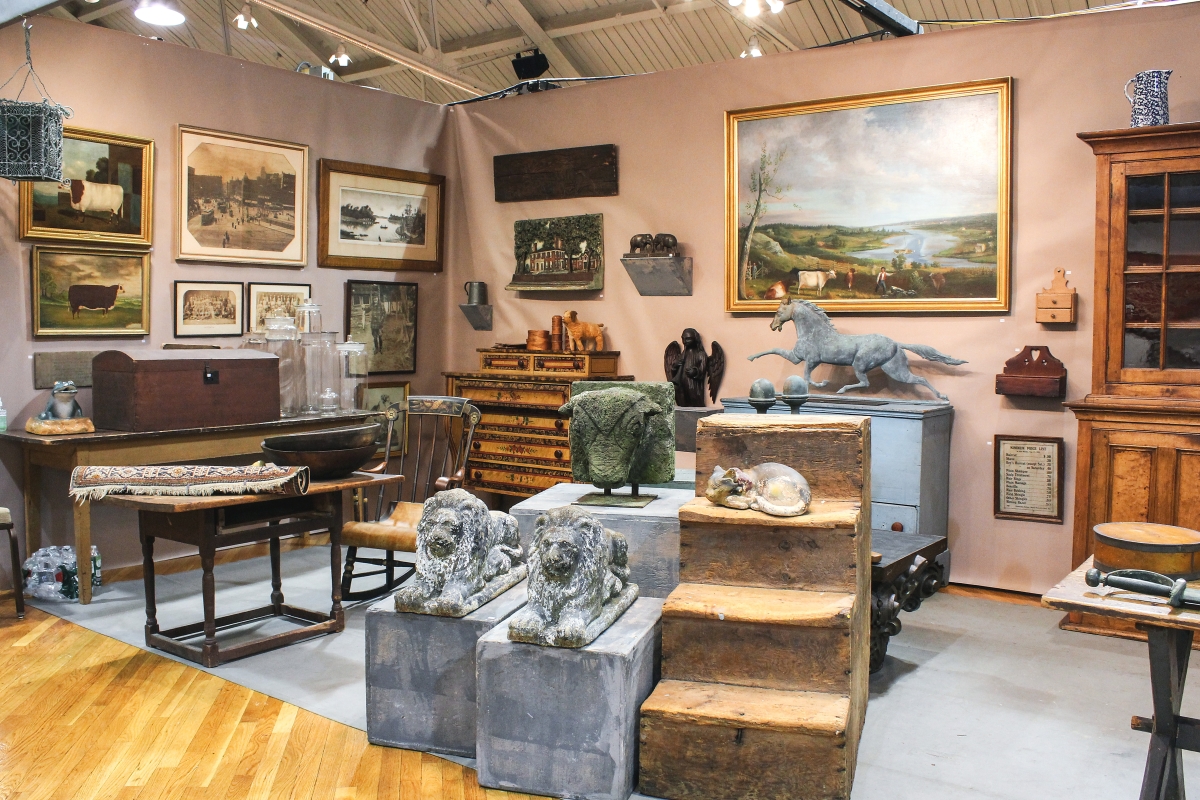
.jpg)
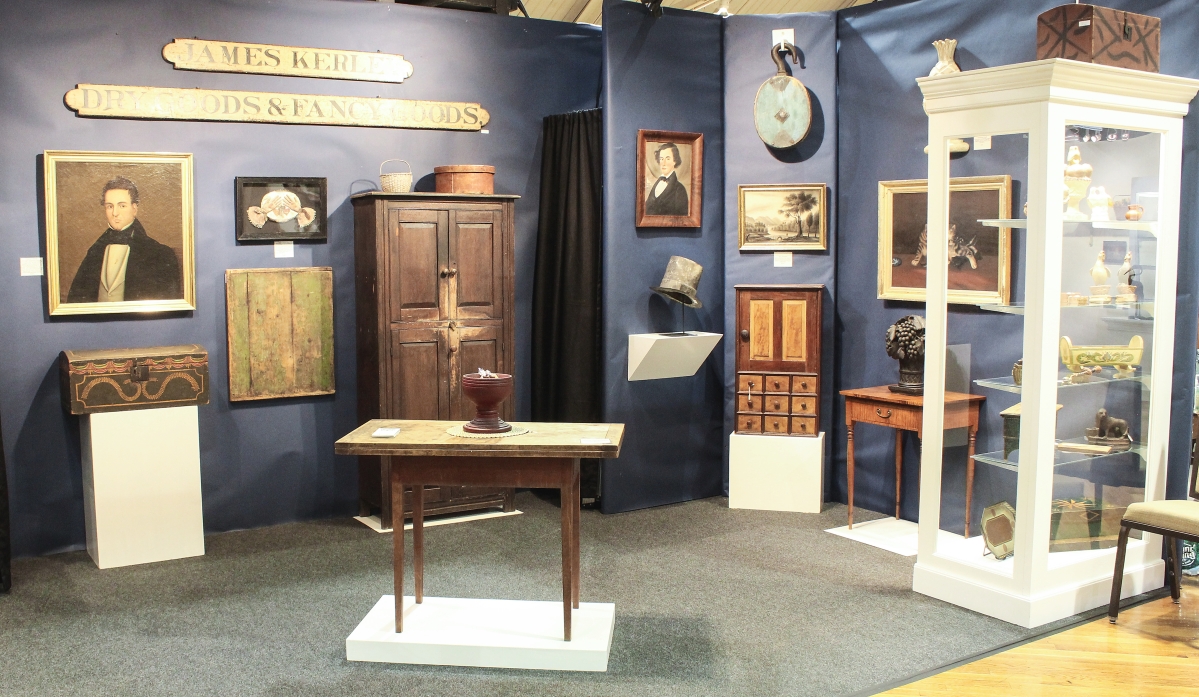
.jpg)
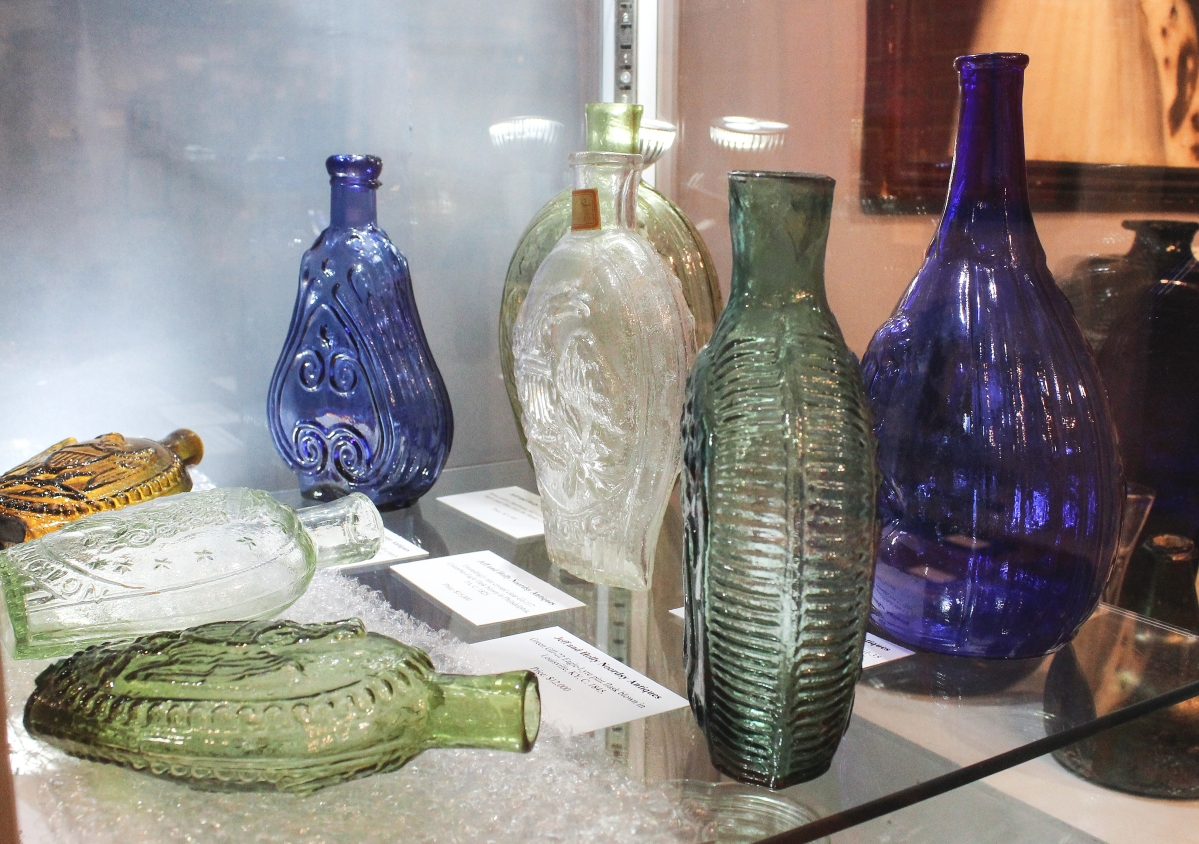





.jpg)


.jpg)
.jpg)











.jpg)
.jpg)

.jpg)



.jpg)
.jpg)
.jpg)
.jpg)
.jpg)
.jpg)
.jpg)
.jpg)
.jpg)

.jpg)






























.jpg)
.jpg)
.jpg)
.jpg)
.jpg)
.jpg)
.jpg)
.jpg)
.jpg)
.jpg)
.jpg)


.jpg)




.jpg)

.jpg)

.jpg)
.jpg)
.jpg)
.jpg)
.jpg)
.jpg)
.jpg)
.jpg)
.jpg)
.jpg)







.jpg)

.jpg)
.jpg)



.jpg)
.jpg)
